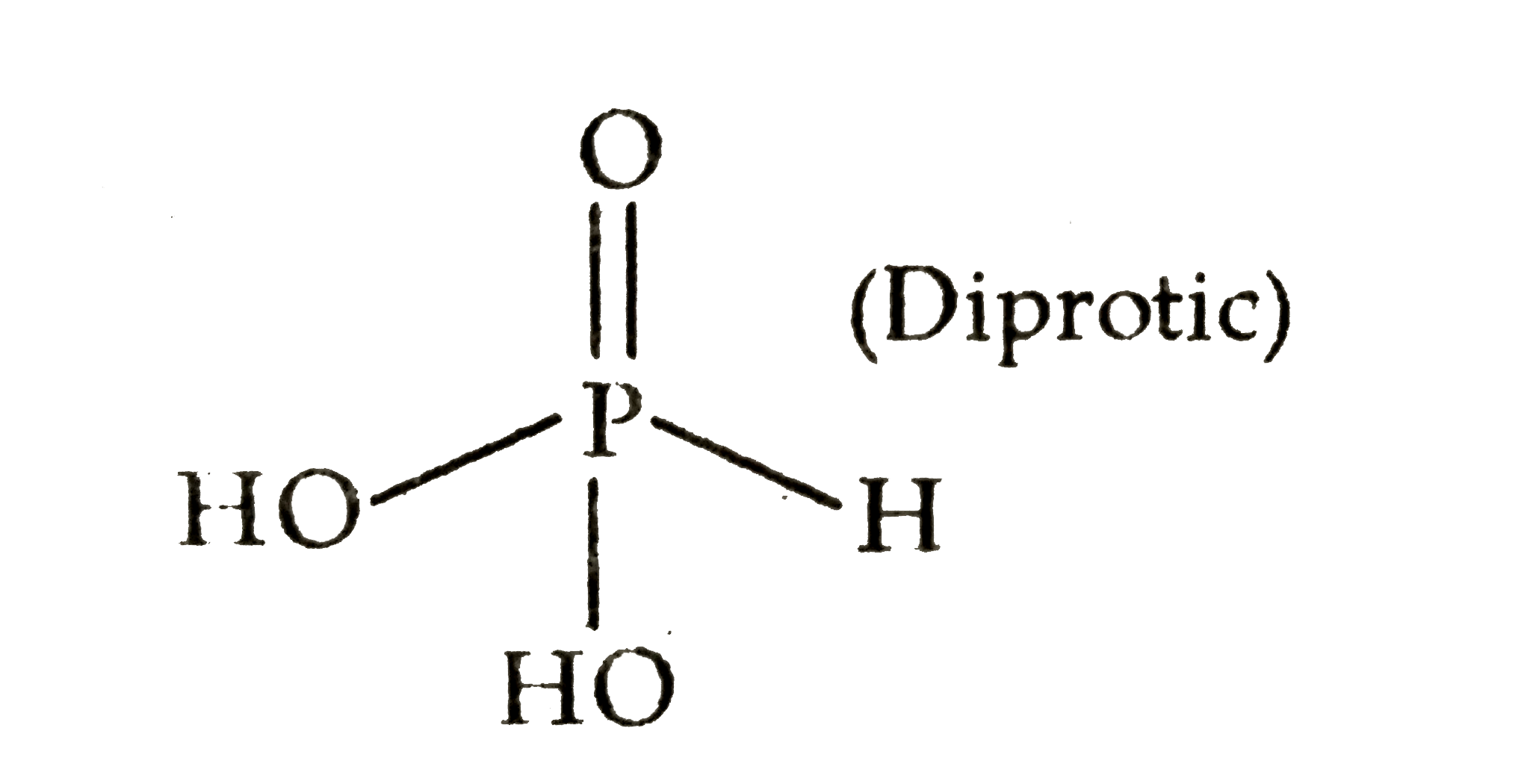(i) What happens when
(a) Chlorine gas reacts with cold and dilute solution of NaOH?
(b) XeF2 undergoes hydrolysis ?
(ii) Assign suitable reasons for the following :
(a) SF6 is inert towards hydrolysis.
(b) H3PO3 is diprotic.
(c) Out of noble gases only Xenon is known to form established chemical compounds.
(i) (a) Chlorine gas with cold dilute NaOH
2NaOH+Cl2→NaCl+NaOCI+H2O
(b) XeF2 udnergoes hydrolysis
2XeF2+2H2O→O2+2Xe+4HF
(ii)(a) In SF6' six atoms of flourine sterically protect the sulphur atom from the attack by the reagents to such an extent that even theromodynammically most favourable raction like hydrolysis do not occur. Hence SF6 is chemically inert.
(b) H3PO3 is diprotic because it has only two OH groups and therefore give only two ionisable H+ ions in aqueous solution.

(c) Xenon has least ionisation enthalpy among noble gas, thus it forms chemical compounds with flourine and oxygen (which are highly electronegative and small sized atoms) readily only under certain conditions.
Topper's Solved these Questions
- BOOK - XII BOARDS PREVIOUS YEARCHAPTER - XII BOARDSEXERCISE - Questions31videos
XII BOARDS
- BOOK - XII BOARDS PREVIOUS YEARCHAPTER - XII BOARDSEXERCISE - OUTSIDE DELHI (SET-I)35videos
XII BOARDS
- BOOK - XII BOARDS PREVIOUS YEARCHAPTER - XII BOARDSEXERCISE - Set - 1 Comptt.30videos
XII BOARDS
- BOOK - XII BOARDS PREVIOUS YEARCHAPTER - SAMPLE PAPER 2019EXERCISE - SECTION: D1videos
SAMPLE PAPER 2019
Similar Questions
Assign suitable reason for the following:
Out of noble gases only Xenon is known to form established chemical compounds.View SolutionAssign reason for the following:
of the noble gas, only xenon is known to form well-established chemical compounds.View SolutionGive reasons :
(i) Xenon does not form fluorides such as XeF3andXeF5.
(ii) Out of noble gases, only xenon is known to form established chemical compounds.View SolutionAssign a reason for the following statements :
Of all the noble gases only xenon is known to form established chemical compounds.View SolutionGive reasons : (i)Xenon does not form fluorides such as XeF3andXeF5.(ii)Out of noble gases, only xenon is known to form established chemicals compounds.
View Solution(a) what happens when
(i) Chlorine gas is passed though a hot concentrated solution of NaOH?
(ii) sulphure dioxide gas is passed through an aqueses solution of Fe (III) salt?
(b) Answer the following :
(i) what is the basicity of H3PO3 and why?.
(ii) why does fluorine not pay the role of a central atom in interhalogen compounds ?
(iii) Why do noble gases have very low boiling points ?View SolutionAccount for the following :
(i) NH3 has a higherboiling point than PH3
(ii) HF is a weaker acid than HI
(iii) Of noble gases, only xenon forms real compounds
(iv) H3PO3 is a diprotic acid.View SolutionAssign reasns for the following
(i) Sulphur vapour is paramagnetic,
(ii) Ammonia (NH3) has greater affinity for protons than phosphine (PH3).
(iii) The negative value of electron gain enthalphy of fluorine is less than that of chlorne.
(iv) SF6 is much less reactive than SF4.
(v) Of the gases only xenon is know the form well-established chemical compoundsView Solution(i) What happens when:
(a) Borax is heated strongly
(b) Boric acid is added to water
( c) Aluminium is treated with dilute NaOH.
(d) BF3 is reacted with ammonia.
(ii) Explain the following reaction.
CO is heated with ZnO.View Solution(a) Write the formula and describe the structure of a noble gas species which is isostructural with
(i) Ibr−2
(ii) BrO−3
(b) Assign reasons for the following :
(i) SF6 is kinetically inert.
(ii) NF3 is an exothermic compound whereas NCl3 is not.
(iii) HCl is a stronger acid than HF though fluorine is more electronegative than chlorine.View Solution

